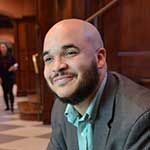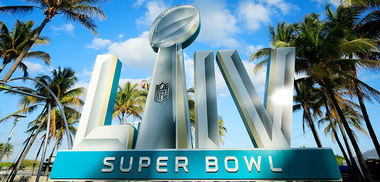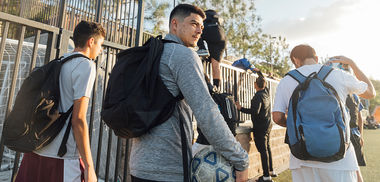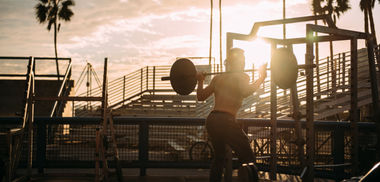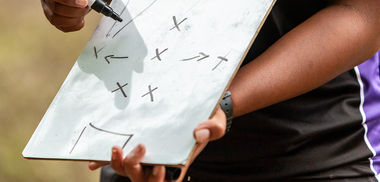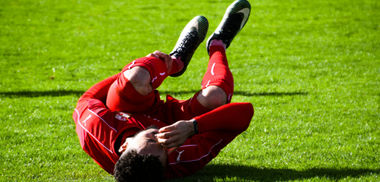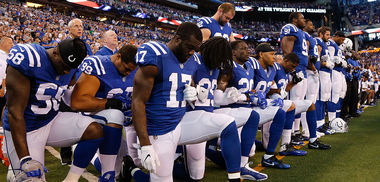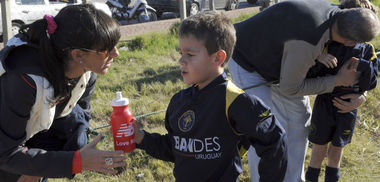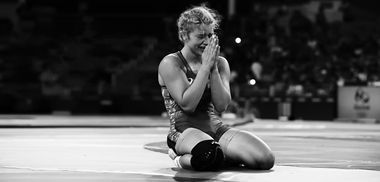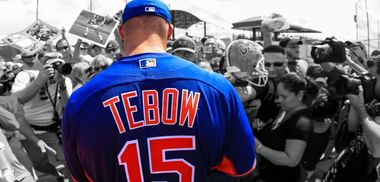The passage from Hebrews 12 about "the great cloud of witnesses" has always resonated with me.
I have always imagined a great cloud of invisible saints cheering me (and all of us) on as we run the race of life. I can almost see them standing in heavenly bleachers celebrating our victories, encouraging us when we stumble.
Something like a divine Wembley Stadium or a holy Cameron Indoor...
My Favorite Race of the Spring
...or Franklin Field during the Penn Relays. The Penn Relays are the oldest and largest track and field event in the U.S.
Growing up I had long heard about relatives of mine who had run in the relays. My high school would always send its 4 x 100 and 4 x 400 meter relay teams. In our insular track world this was just about the biggest honor a runner could have—being selected to represent our school at the Penn Relays.
You can only imagine my joy during my sophomore year when coach told me I was going.
I was the third leg of the 4 x 100 relay team. As we were led onto the field, I soaked in the amazing crowd that was there to watch and cheer us on as we ran our race.
To put this in perspective, at most of our home meets we would have a crowd of maybe 15 spectators—all parents. Saturday at the relays there are more than 50,000 people watching, yelling, and savoring the sport that they love.
I got to run in the relays for three years in a row. We got crushed every single time. But running on that track remains one of my sports-glory stories that I find myself telling over and over again to my kids.
Get our "Top Articles" sent to your inbox weekly.
Remembering What Needs to Be Remembered
I co-teach a Black History Class here at Penn and our classroom is one block from Franklin Field where the relays are run.
This year there is a young brother named Cal from the university's track team in our class. He’s a brilliant student, member of our student government and sprinter on the team.
In class we looked at a picture of an alum named John Taylor. Taylor graduated from Penn in 1908 and would go on to be the first African-American to win a gold medal in the Olympics that same year helping to set a world record in the 4 x 400 relay.
“Why am I just now learning about this cat?” Cal asked. “That’s amazing that he went here. Why doesn’t he have a statue or something named after him?”
Every year that we teach this course, I see the images of Black Penn alumni from more than a century before. To me they are the cloud of witnesses cheering me and other Black members of our school community on now that we have taken up the baton to run our leg of the race.
But I often find myself holding the question that Cal asked, "What can we do to honor those in the crowd of Black History around us?"
It’s a fascinating question in the context of sports. Not just why doesn’t John Taylor have a statue here at Penn, but the question beneath it—how shall we celebrate Black History in sports?
Here are three ideas:
Celebrate the greats
Many schools around the country, including the middle and elementary schools where my daughters attend, have posters up all around their buildings with pictures of famous historical Black figures.
Seeing faces that look like you on the walls makes a deep impression on young people.
Or consider it the other way – never seeing faces that look like yours in history books or on the walls of your classrooms also has a deep effect on a young mind as they imagine what they want to and can be when they get older.
Placing up images in the locker room of African-American greats will educate your athletes regardless of their race and it will help them learn the game. Likewise, it will help your players to feel affirmed, welcomed, and loved.
Take it a step further and have a team study about a different Black athlete each week. They will learn history while learning the game.
Learn the Black history of your current context
While it may take a little more effort, you can work to uncover and celebrate the unknown Black history of your team, school, or sport.
Who was the first Black athlete to earn a varsity letter at your school? Or to play for or coach your team?
What was their experience like?
Is there a way to celebrate them?
Can you learn from their journey?
What an opportunity to take a step towards the great cloud of witnesses that is cheering us on.
Pay attention to the experience of your Black neighbors or teammates
Black history month need not only be about the past.
As believers, loving our neighbors is an important part of our Christian walk. One way to employ this during Black history month is to pay attention to the experience of our Black neighbors or teammates.
My middle daughter is the only Black player on her soccer team—not an uncommon reality in our part of the country. I recently had another parent reach out and ask how that experience has been for her and our family.
It took her a lot of courage to ask me that in the stands.
Talking about race isn’t easy especially at such a charged moment nationally. But it meant a lot.
As cool as her coaches are and as kind as the other families on the team are, it’s not always easy for me or my daughter. This other parent can’t do much about that, but she can care. And that goes a long way.
And in many ways that is exactly why non-Black folks should celebrate Black History month. Because the act of caring for neighbors is a part of our calling.
So let's work to affirm those around us on our teams and in our lives as well as those cheering us on from the past and from the great cloud of witnesses.

